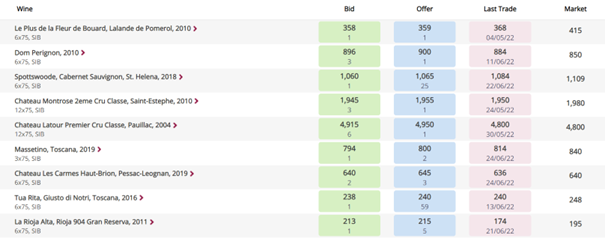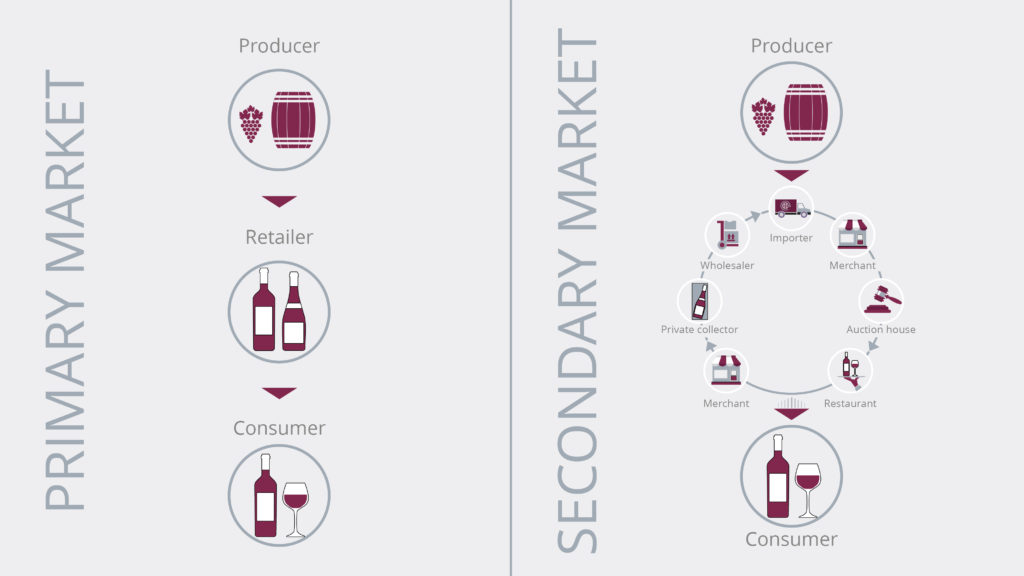- A secondary market is where investors buy and sell securities and assets that are already in circulation i.e. not through a ‘primary’ release like an IPO or an EP campaign.
- The (secondary) fine wine market is where wine is resold by one party to another.
- Liv-ex provides an online marketplace where fine wine is bought and sold by wine businesses.
What is a secondary market?
The secondary market is where investors buy and sell securities and assets already in circulation. It is different from the primary market, where the asset or security is created and sold for the first time.
The secondary market is most often associated with the stock market, where buyers and sellers meet to exchange shares (equities) in publicly listed corporations. Some of the largest of these are The London Stock Exchange, The New York Stock Exchange and the Tokyo Stock Exchange.
Stock markets offer an independent and transparent place where participants (members) can access the key price data (bids, offers and recent transactions) of listed stocks and trade against these efficiently and without conflict.
But secondary market activity is not limited to stock markets and company shares. It is also to be found in fine wine, amongst others.
Transferring the concept to fine wine

In the primary wine market, the wine is sold by the producer to the end-consumer, usually through a wine merchant. Once bought, the wine will be consumed, eventually. The wine is not traded but stays with the original buyer until drunk. Most wines never leave this primary market.
A secondary market is created when that original owner decides to sell any excess wine they own to free up the capital they originally invested in the wine through its purchase; especially if the wine has appreciated in value since then.
Typically, the original buyer will sell back to the merchant from whom they purchased it. This merchant might offer the wine to another merchant or to another client of theirs with an interest in the wine. The trades for a single bottle or multiple cases between different merchants and collectors can be numerous – and at different prices – before the wine eventually gets drunk. The wine’s value will usually change (increase or decrease) over time.
Only a small percentage of wine will enter the secondary market. It needs to have sufficient demand, and usually the potential for price appreciation. Investment worthy wines tend to be those that can age (and improve) over time.
Liv-ex – democratising the fine wine market

The idea of bringing transparency and efficiency to the trading of fine wine was the motivation behind the establishment of Liv-ex (London International Vintners Exchange) in 2000, by two ex-stockbrokers, James Miles and Justin Gibbs.
Liv-ex provides a platform where wine businesses can trade and get access to the most comprehensive database of real-time prices and exclusive market data and insights. It thus serves as the secondary market for fine wine.
Today, 600 wine businesses from 43 countries worldwide use the Liv-ex market to buy and sell wine anonymously, often on behalf of their customers. The activity of these merchants through the exchange (which operates independently on behalf of its members) has created the largest pool of secondary market liquidity in the wine world with over £100m of active bids and offers.
Liv-ex guarantees fast and reliable settlement of trades through its payments and global logistics network. Its members looking to automate and accelerate the growth of their businesses can make use of a suite of APIs from price discovery to payment.
Further reading:
How to digitally transform your wine business
The changing nature of fine wine buying
Selling wine in a post-Covid-19 world: a guide for merchants
Not a member of Liv-ex? Request a demo to see the exchange and a member of our team will be in touch with you shortly.



